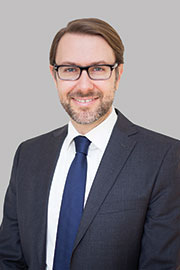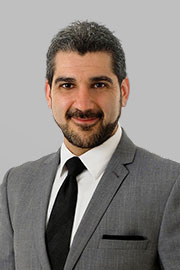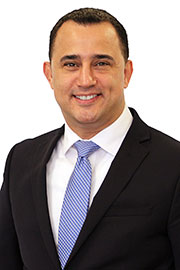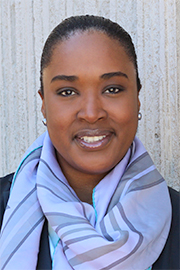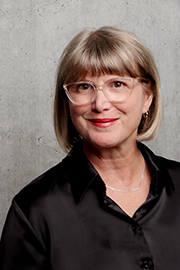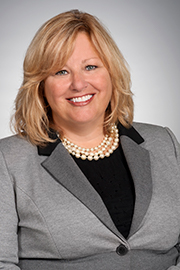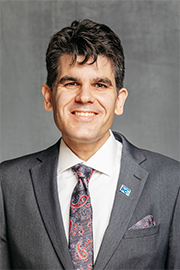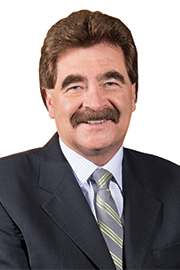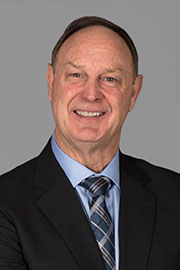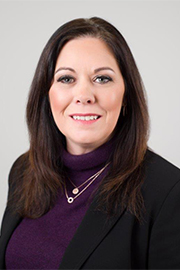- Nov/29/22 4:40:00 p.m.
One of the schedules in this bill talks about animal health. As we know, our American friends just celebrated Thanksgiving this past weekend, and I heard on the news that the price of turkey has gone up by 30% to 40% in some of the states, forcing some families to choose alternative options for their Thanksgiving dinner.
This government is taking actions to enhance Ontario’s animal disease emergency preparedness. If a significant animal health event should occur, like the avian flu, for example, quick action is needed to safeguard supply chains and mitigate the risk of further spread. Does the member opposite agree with this particular schedule in the bill?
- Hear!
- Rabble!
- Nov/29/22 4:40:00 p.m.
Thank you to the member from Humber River–Black Creek for his presentation. Speaker, since being elected in 2018, our government has taken over 400 actions to reduce red tape, while maintaining important regulations that protect people’s health and safety and the environment. This has led to savings of $576 million per year in compliance cost reductions by reducing the total regulatory burden in Ontario by 6.5%.
Speaker, my question is, will the member opposite agree that cutting red tape saves people and businesses time and money so they can grow their business easily?
- Hear!
- Rabble!
- Nov/29/22 4:50:00 p.m.
Before I ask my question, if you’ll allow, Speaker, I want to say that former MPP Bill Walker is in the House from the 40th, 41st and 42nd Parliaments. It’s good to see him here.
My question, Speaker, is regarding one of the things that the member from Humber River–Black Creek mentioned, which was about the diversity we need when it comes to juries. I know there are a lot of lawyers who sit on the government side, so I think they will appreciate this as well. Would the member explain a little bit in terms of the need for that?
- Hear!
- Rabble!
- Nov/29/22 4:50:00 p.m.
Thank you for my friend’s answer across the way, but I’m looking for some specifics. The MNRF is working towards creating a framework to regulate and enable the permanent geologic storage of carbon, also known as carbon sequestration, while also maintaining public safety and safeguarding the environment. We’re proposing an amendment to the Oil, Gas and Salt Resources Act as a first step of a phased approach towards addressing barriers to the permanent geological storage of carbon in this province.
My question to the member on the other side is: By removing the red tape barriers we inherited from the opposition, our government is introducing new tools to capture and store carbon to protect our environment. Does the member opposite support our efforts to reduce emissions in Ontario and support industries to meet their emission targets?
- Hear!
- Rabble!
- Nov/29/22 4:50:00 p.m.
Thank you to the member for an important question. Just before I get to it, I just want to say hi to Bill and recognize again his presence here. And I do want to say one thing because this ties into what I had said before. When he was minister and I was critic at the time, on a particular bill that came forward—and I don’t agree where it ended up—there was some conversation, there was some consultation at the time. It was rare under the last session, and I’m hoping that changes under this session. So I do acknowledge him on that as minister.
I want to state for the record that jury selection is important. It has to be more diverse. We’re opening up acts. We have the possibility to make changes. I know the government has many lawyers and people that come from that background here. I think you know it’s the right thing to do. Let’s do it. Let’s make sure that access to juries is more accessible and more diverse and reflective of our population. Thank you for that question.
When it comes to carbon sequestration, I will rely on the experts’ opinions. But I had mentioned this one thing—and again, it was mentioned by another colleague of mine: The simplest way to develop a carbon sink is to plant trees, is to protect environmentally protected lands. We have so many green spaces that this government is so eager—environmentally protected green spaces, again, under the conservation authorities that were established by previous Conservative governments. If you really want to provide a sink for carbon, plant trees, protect environmentally sensitive green spaces. That is a non-controversial, important way forward.
Again, it’s very important to highlight this issue. Why do we bring it up? Since the government is opening up certain acts, this is something that is very key and very important. We call on members of the public to come and serve on a jury, and sometimes a trial is going to take longer for two weeks. If you’re not compensating them for that, how can they simply do their job to help as a juror? It’s not easy. I think this is something that you should take back to your ministries; it’s something that you should work on—and I think you will find the support of the official opposition. I think it’s the right way forward. Let’s compensate those jurors, and let’s make it more accessible.
- Hear!
- Rabble!
- Nov/29/22 4:50:00 p.m.
Point of order.
- Hear!
- Rabble!
- Nov/29/22 4:50:00 p.m.
It’s a really tough act to follow—after the member for Bruce–Grey–Owen Sound, who, by the way, was a mentor to me, and I can speak for so many of my colleagues. He was so helpful to so many of us when we got elected here in 2018—not just inside the Legislature here, but outside as well.
Thank you for your friendship, for your mentorship, my friend.
My honourable colleague, who I have a great deal of respect for and have worked very closely with since we got elected in 2018 here—I had the privilege of being the parliamentary assistant in the ministry; I was in charge of red tape reduction and small business. My honourable colleague talked about the conditions back in 2018, and I can tell you it’s so different today than it was back in 2018. I remember travelling the province, listening to entrepreneurs, job creators in the province. We were suffocating in red tape here. Our businesses were fleeing the province because of the inaction by the previous government. Unfortunately, all along the way, the NDP had been supporting them. We were losing jobs—300,000 manufacturing jobs in Ontario left.
Fast-forward four years later: As a result of the work of this government, under the leadership of this Premier, and the Minister of Red Tape Reduction and the parliamentary assistant in the Ministry of Red Tape Reduction, we have jobs coming back to Ontario, green jobs coming back to Ontario. We’re going to be a leading jurisdiction for the auto sector and others.
Madam Speaker, I can speak about the great work that the Minister of Red Tape Reduction is doing all day, but I’d like to wrap it up by moving adjournment of the debate.
- Hear!
- Rabble!
- Nov/29/22 4:50:00 p.m.
Those were wonderful comments from our member from Humber River–Black Creek. Thank you for also talking about juries and the need for diversity within our jury selection.
I recently learned that jury members in Ontario, I believe, are not paid for 10 days on the jury, and I’m wondering if you would suggest to this government that they look into that aspect. If jurors aren’t paid, that in itself creates an economic barrier for folks from different socio-economic backgrounds to participate in the jury system. And I might guess that women and BIPOC folks may be disproportionately impacted by those unpaid days as a juror.
- Hear!
- Rabble!
- Nov/29/22 4:50:00 p.m.
Next question?
Second reading debate adjourned.
- Hear!
- Rabble!
- Nov/29/22 4:50:00 p.m.
I, too, would like to share my sincere welcome to Bill Walker. I had the pleasure of serving with Bill in the 40th, 41st and 42nd Parliaments, from 2011 to 2022. Bill was an amazing representative for Bruce–Grey–Owen Sound. He is now back in the House, wearing the very proud title of president and CEO of the Organization of Canadian Nuclear Industries.
It’s great to have you back in the House, Bill.
- Hear!
- Rabble!
- Nov/29/22 4:50:00 p.m.
I move that, in the opinion of this House, the government of Ontario should consider integrating the Ojibway Prairie Provincial Nature Reserve with adjacent lands under the management of Parks Canada to facilitate the creation of Ojibway National Urban Park as part of an overall strategy to protect local endangered species and natural heritage areas, aid flood mitigation efforts, create publicly accessible green space, and further encourage ecotourism in Windsor-Essex.
- Hear!
- Rabble!
- Nov/29/22 5:00:00 p.m.
I’m honoured to rise today to support and to conclude the good work begun here by the member for Windsor West to partner with the federal and municipal governments, Indigenous communities and adjacent landowners to create the Ojibway National Urban Park. I know the Ojibway Prairie Provincial Nature Reserve very well, as well as the Ojibway complex as a whole. These lands are collectively being proposed for inclusion in the national urban park. The initiative to create a national urban park is a good practice, in that multiple sites that are home to a rare but rich biodiversity would be managed as one.
The largest protected parcel in the Ojibway complex is the Ojibway Prairie Provincial Nature Reserve. It is a place of renewal and a place of peace. It is bounded on all sides by various types of land development: residential, industrial and commercial, and other parkland. It is home to significant tall grass prairie and oak savannah, which are critically endangered ecosystems in Canada. Less than 0.5% of the original prairies and savannah remain in all of southwestern Ontario.
In addition to critically endangered ecosystems, Ojibway Prairie provides critical habitat for almost 200 rare plants, insects, reptiles, birds and mammals, several of which are found nowhere else in Canada. In fact, the Ojibway Prairie is listed in the Canadian Protected and Conserved Areas Database as a protected area.
The most threatened part of the Ojibway complex is a federally owned property named Ojibway Shores, located at the Detroit River. It has numerous rare and threatened species on site. Despite that, it has been repeatedly vandalized, and it is also a go-to spot for illegal dumping. For 15 years, the federal government resisted protecting this land and actively marketed it for industrial development. The federal government has since had a change of heart, which led to their announcement that the Ojibway National Urban Park would be created.
Nearby Ojibway Park is operated by the city of Windsor and is located across the street from the Ojibway Prairie Provincial Nature Reserve. It is not only host to some of the best natural environments in Windsor and Essex county, but also to some of the most passionate and committed champions of biodiversity that we could ever have.
I want to take this opportunity to say thank you to two incredible stewards of Ojibway, Karen Cedar and Tom Preney, who spend long hours, day and night, working to protect our remaining natural environment throughout the city of Windsor. Their work doesn’t stop within the boundaries of protected land. They work hard to ensure that man-made changes to land development areas and municipal projects are completed in a manner that respects and enhances the viability of the precious natural environment that we do have.
Our government is committed to protecting nature reserve lands from harm, and the province has been doing so at the Ojibway Prairie Provincial Nature Reserve since 1977—the province’s protection as a nature reserve from adverse human development is the strongest among all regulation nationwide.
As human development continues downstream along the Turkey Creek, a sound management plan for the collective of lands is needed for the existing natural environment to ensure that our conserved areas will not be adversely affected. This is the best outcome for our natural environment, and it would reinforce the significance of the lands that we have here.
I’m confident that this House will see the wisdom in supporting this motion that will demonstrate that the province of Ontario is a willing and supportive partner in the creation, development and governance of the Ojibway National Urban Park, located in both the city of Windsor and the town of LaSalle.
The House previously debated motion 1 on October 25, in which the member for Windsor West solicited support from the House to transfer the ownership of the Ojibway Prairie Provincial Nature Reserve to Parks Canada. The national urban park model set out by Parks Canada is different than existing national parks in that it is proposed to be a way to bring multiple landowners in an urban setting together under a common management plan. Parks Canada has made it very clear that the governance of a national urban park does not require a transfer of the ownership of lands. In some cases, this may not be the right outcome.
Ontario Parks is already taking part in the partner committee established by Parks Canada, which will initially develop the governance model for the park.
The materials for the November 17 public meeting regarding the park hosted at the Ojibway Park Nature Centre noted the desire of Parks Canada to manage national urban parks under a range of flexible governance models. Potential models being considered include:
—federally administered places, in which the national urban park is administered by Parks Canada, such as the Rouge National Urban Park;
—partnership models, in which the national urban park is administered by collaboration between Parks Canada and other partners;
—places administered by third parties, in which the national urban park is administered by other governments or organizations, which may include municipal, provincial or Indigenous governments or other organizations.
Further, it was reported at the public meeting that, “The national urban park in Windsor will be created under policy, although legislation may be brought forward in future. Policy allows flexibility, suited to a partnership model for the governance of national urban parks in these ways:
“—current land administrators can retain responsibility for their lands, rather than transfer them to Parks Canada;
“—shared park operations and management are more cost effective and efficient;
“—park governance is more flexible, allowing for a partnership model, including co-operative management by Indigenous peoples and the exploration of an Indigenous protected and conserved area;
“—long-term protection can be achieved through a mix of legal and other tools.”
A prospective passage of motion 1 would have signalled that this House disputes the recommendation provided at the public meeting. As the area’s most significant landowner of protected lands, the province of Ontario is a major stakeholder in this discussion, and I took the opportunity to consult with the Minister of the Environment, Conservation and Parks to gain a greater understanding of the work of the civil service on this file.
It is vital to support Ontario Parks in its participation in the partner committee established by Parks Canada to complete the pre-feasibility assessment for the park and to discuss a range of models for the proposed national urban park, including shared governance arrangements. The Parks Canada direction does not benefit from being restricted to delivering a specific land management strategy.
Speaker, at the foundation of national urban park projects is partnership. Our colleagues at the government of Canada have acknowledged the importance of, and have committed to, engaging in collaborating with local stakeholders and community partners on the Ojibway National Urban Park project each and every step of the way.
Parks Canada has been working diligently to ensure that national urban parks provide space for Indigenous stewardship, promote Indigenous voices and stories, and offer opportunities for connections to lands and waters based on Indigenous knowledge and values. The process aims to advance reconciliation with the traditional territory holders, Caldwell First Nation and Walpole Island First Nation, and other Indigenous peoples, including those with historic and linguistic connections to the area.
Ontario Parks already has a significant record of co-managing provincial parks with Indigenous peoples. For example, work is under way to operate Mississagi Provincial Park by a joint foundation that includes the city of Elliot Lake, Serpent River First Nation and Mississauga First Nation.
At Short Hills Provincial Park, the Haudenosaunee Confederacy, consisting of the Mohawks, Oneidas, Onondagas, Cayugas and Senecas, has held traditional white-tailed deer harvests since 2013. And the Algonquins of Ontario are working with Ontario Parks to support additions to Hungry Lake Conservation Reserve, Whiteduck Provincial Park and Lake St. Peter Provincial Park. These partnerships protect the ecological, historical and cultural features of value while still maintaining recreational opportunities for people to enjoy.
Speaker, momentum for the Ojibway National Urban Park has continued to grow across our community. Two weeks ago, Windsor West MP Brian Masse’s private member’s bill, Bill C-248, which establishes Ojibway National Urban Park, passed the House of Commons Standing Committee on Environment and Sustainable Development, and I look forward to seeing even more progress at the federal level.
Parks Canada is currently in the pre-feasibility assessment period in which they will explore the properties under consideration for being a fit within the objectives of the national urban parks program, as well as identification of the appropriate partners and the conducting of relevant studies.
I invite all Ontarians to contribute their feedback to the national urban park. The meeting materials are available right now and submissions will be received at citywindsor.ca until December 15.
Speaker, in closing, I ask all members of this House to consider supporting the inclusion of Ojibway Prairie Provincial Nature Reserve in the broader management of the future Ojibway National Urban Park. Our natural environment in Ojibway is special and is irreplaceable. The Parks Canada national urban park model for Ojibway that considers the management of the natural environment as a whole, regardless of individual ownership, is crucial to ensure that our tall grass prairie and oak savannah vegetation communities, together with the numerous rare plant communities and significant species contained within it, will thrive for generations to come.
- Hear!
- Rabble!
- Nov/29/22 5:10:00 p.m.
Point of order.
- Hear!
- Rabble!
- Nov/29/22 5:10:00 p.m.
Thank you, Madam Speaker. I’ll be sharing my time with the members from Renfrew–Nipissing–Pembroke and Brampton North.
In Essex county, we have a road called County Road 50. It goes down by Lake Erie, and there’s a big curve in the road, and when you get to the big curve in the road you get to a place called the John R. Park Homestead. That is located directly on the north shore of Lake Erie. The homestead is a fascinating place. It’s managed by the Essex Region Conservation Authority. The curator is Kristin Ives, and she was just recently named president of the Ontario Historical Society.
Now, the John R. Park Homestead has many interesting buildings. They all date back to the 19th century—that’s the 1800s. There’s a home, of course, and there’s a barn, but the most fascinating part of the homestead, in my opinion, is the sawmill. It’s pretty fascinating for a few reasons. First of all, it’s fully operational. You can actually start up that saw and cut wood with it. But you might not appreciate how rare that is if you’re not from Essex county. Il se peut que vous n’appréciez pas l’importance de la scierie si vous ne venez pas du comté d’Essex.
Les habitants originaux d’Essex étaient des fermiers français. C’étaient les habitants originaux qui ont défriché la terre. Actuellement, il existe beaucoup de fermes actives, mais cela veut dire aussi que les forêts n’existent plus à Essex. Le comté d’Essex a plusieurs petits boisés, mais on ne pourrait pas dire que nous avons des forêts.
La scierie est importante car il y avait un temps dans notre histoire qu’on pourrait construire une scierie et on pourrait faire des bonnes affaires. La ferme John R. Park est importante parce que vous êtes près d’une vraie scierie. C’est une marque de l’époque passée.
Ça, c’est le passé, mais aujourd’hui, Essex est bien différent. That was the past, but today Essex is very different. For example, you can walk about 800 feet from my house, stand at the corner of the second concession and Middle Side Road, and look north, and if you do that at night you’ll see some lights in the distance. Those lights are actually 33 kilometres away, and they’re the lights on the Ambassador Bridge, which spans the Detroit River and joins Windsor and Detroit. You can literally stand at the corner of the second concession and Middle Side Road and see 33 kilometres without any obstruction. That is how flat Essex county is, and that tells you something about the topography of the area.
As you travel north from that point, you go past the River Canard watershed, and you arrive at what we often call the Ojibway Prairie. That’s a pretty unique space, as my friend the erudite member from Windsor–Tecumseh was speaking about. It bears the name of one of the First Nations of the area. That nation was among General Isaac Brock’s allies during the War of 1812. It’s fitting they should give their name to the area.
Now, let me tell you a little bit about Ojibway Park, according to the Ontario Parks website, because it is an official park. It consists of native prairie, savannah and open woodland. It has layers of sand, silt and clay that cover the bedrock—in some areas, 30 metres deep. That’s rare. Many of those layers were laid down 10,000 years ago or more.
In the springtime, it’s wet, and in the late summer, it’s dry, and that makes it ideal for prairie vegetation. It includes over 500 flowering plants. Some of those are mints, lilies and figworts, and 18% of those plants are considered rare in Canada. It also has interesting fauna, including Butler’s garter snake and the bobwhite.
But the extremely important point to remember is that it’s already a park. It’s a provincially protected park. It was established in co-operation with the Nature Conservancy of Canada, the province of Ontario and the city of Windsor. And I’d like to congratulate my colleague from Windsor–Tecumseh for his forethought by bringing this motion, and I’d like to recognize, also, the member from Windsor West for her concern about this issue.
I think this is a motion we can all get behind. I’ll certainly vote for it myself and encourage others to do so as well.
- Hear!
- Rabble!
- Nov/29/22 5:10:00 p.m.
I rise today to discuss the important motion in front of us, creating the Ojibway National Urban Park.
I would like to begin by noting the incredible work that my colleague from Windsor West has done to make the Ojibway national park become a reality. She has worked and continues to work with the city of Windsor, Caldwell First Nation, the member of Parliament, Brian Masse, constituents and various environmental groups to get this project done.
I truly commend her work, which has paved the way to where we are today, and I want to acknowledge her tireless effort and willingness to work with everybody in this House for the Ojibway National Urban Park initiative that is in her riding of Windsor West. It’s a perfect example of a member going into their community, listening, gathering support, working with their federal counterpart and bringing forward legislation that should be supported by all in this House. So thank you for all the hard work that was put into this previous motion. It’s always great to see multiple levels of government working together to serve the best interests of their communities.
Speaker, I’d really like to start with something fundamentally important: the protection of the significant environmentally sensitive land. The climate crisis that we face in Ontario, in Canada and right across the world only adds to the urgency of projects like the one in front of us today. The project is going to take several important pieces of land, including the Ojibway Park, Spring Garden Natural Area, Black Oak Heritage Park, the Tallgrass prairie park, the Ojibway Prairie Provincial Nature Reserve and Ojibway Shores, all into 900 acres of national park.
While I know the member from Windsor West has highlighted how many of these areas are significant, the transfer of the Ojibway Prairie Provincial Nature Reserve to Parks Canada will allow this important ecosystem and green space to be properly protected. It will include protecting local endangered species, aiding flood mitigation efforts as climate change increases flooding events, and creating publicly accessible green space that will encourage ecotourism and preserve natural heritage sites. The benefits of this park creation are well founded and hard to not support.
But I know the protection of significant environmental lands is not something this government is too concerned about. We can see that with the passing of Bill 23 and the gutting of our greenbelt in Ontario, including my community of Niagara, because we know that’s what Bill 23 does. That legislation will not solve the housing crisis; in fact, it will make the housing crisis even worse, especially for seniors and our young people. It will tear up some of the most important wetlands, farmlands and green space in the country. We saw that through the—
It will tear up some of the most important wetlands, farmlands and green space in the country. We saw through the pandemic the importance of our local farmers and having our own food supply. This bill is a slap in the face to our farmers, and quite frankly, we have an—
Speaker, I think we should also really focus on ecotourism benefits that could be created with the passing of this motion. In my riding of Niagara Falls, I’ve had the honour of living among the most prominent ecotourism destinations in Ontario: the Niagara parks, the stretch of land around the Niagara River. We also have beautiful Niagara-on-the-Lake in my riding, and the natural heritage they have preserved is a major reason for tourism. So I’ve seen first-hand how preservation of natural areas can really boost your tourism industry. This will likely be the case with the creation of this national park.
Speaker, I want to be clear on this. I’d like to wrap up by briefly discussing how hard I know the member from Windsor West has worked on her motion related to this issue. The member from Windsor West worked hard in speaking with stakeholders, with local First Nations groups, with her federal counterpart to bring this bill together and put this before the House. I want to be clear on this, because it has happened before in this House: It’s unfortunate that the PC member has ridden in at the eleventh hour to get some attention with this legislation. It’s unfortunate that they did not work constructively together with the member from Windsor West. That’s what we’re supposed to do in this House—work together—and this is a perfect example of how we could’ve done it a lot better.
Thank you very much for giving me a few minutes of your time.
- Hear!
- Rabble!
- Nov/29/22 5:10:00 p.m.
Further debate?
- Hear!
- Rabble!
- Nov/29/22 5:10:00 p.m.
Point of order, Speaker.
- Hear!
- Rabble!
- Nov/29/22 5:20:00 p.m.
It’s my pleasure to rise to speak to this motion. It’s basically like speaking to my motion all over again because, aside from eight words, nothing has changed since my motion.
It’s interesting the member from Essex is thanking the member for Windsor–Tecumseh for his foresight. Actually, we’ve been working on this for years now with the community, with my federal counterpart, through environmental organizations and Caldwell First Nation. So really, they’re the ones that should be getting the thank you for the work that has happened to get it to the point where it is today.
Speaker, I had a speech prepared, but listening to debate from my colleagues around the House, both on our side and the other side, I just have some thoughts. I have some big feels now that I’m going to share.
When you look at the original motion, the motion I tabled back in August, it said, “That, in the opinion of this House, the government of Ontario should transfer ownership of the Ojibway Prairie Provincial Nature Reserve to Parks Canada to facilitate creation of the Ojibway National Urban Park as part of an overall strategy to protect local endangered species and natural heritage areas, aid flood mitigation efforts, create publicly accessible green space and further encourage ecotourism in Windsor-Essex.”
I’ll just read the portion of the member for Windsor–Tecumseh’s motion that’s different from mine: “That, in the opinion of this House, the government of Ontario should consider integrating the Ojibway Prairie Provincial Nature Reserve with adjacent lands under the management of Parks Canada.”
Now, Madam Speaker, my colleague from Niagara Falls was talking about the greenbelt and what we’ve just seen happen with a bill here in the House. We are talking about a provincially protected space right now, Ojibway Prairie Provincial Nature Reserve. It’s under the umbrella of Ontario Parks. Bill 23—and this is the concern of my community. I had a conversation with the leaders from Friends of Ojibway earlier today. I’ve had conversations with Chief Mary Duckworth from Caldwell First Nation; I just had another conversation with her this morning. I’ve had conversations with ERCA; I’ve had conversations with community members; I’ve had conversations with those from the Unifor Local 444 environmental group. I’ve had lots of conversations since the government tabled Bill 23.
The concern is that if the province doesn’t transfer this land to Parks Canada so that it would be protected under the federal legislation, what we are going to see happen is that this government is going to open up this incredibly environmentally significant land for whoever wants to come along and build on it. There are very real concerns.
Interjections.
Interjection: Including the Indigenous communities.
Interjections.
Madam Speaker, I want to take an opportunity to talk about consultation. As I said—
Madam Speaker, at the end of the day, this is incredibly important. It is environmentally significant. It is important to my community. We have done years and years of community engagement and consultation.
The city of Windsor is going to be transferring land. The federal government will be transferring land. Caldwell First Nation wants this land protected, and they want to be partners—they are partners, and they need to be treated so.
Another concern that has come forward is the fact that this motion that the member for Windsor–Tecumseh brought forward was done with no consultation with Caldwell First Nation, with the Wildland League, with ERCA, with the Unifor environmental committee, with the Friends of Ojibway Prairie. Any conversations that have happened from the government side have happened after this motion was tabled.
All through this process, whether it was my motion coming forward or my federal riding mate bringing forward Bill C-248, it was community-led, community-driven—their input, every single step of the way, and they’re still included. They’re still included; at least they are with me. And they’re still included and consulted by my colleague the MP for Windsor West.
We have not seen that from the Conservatives to date, and there are very real concerns from all of those stakeholders that, going forward, this is what they will continue to see: a government who treats them as an afterthought. It’s something we had to point out yesterday. They treat First Nation communities as an afterthought: “We’ve passed this bill, and now we’re going to talk to them. We’ve passed this bill, and now we’re going to share the spoils of the bill.”
Madam Speaker, I cannot overstate how important this is to my community, to the people within my community and to this natural green space, this very significant environmental space. I would hope that the Conservative members, instead of heckling about it, would actually consult with all the affected parties.
- Hear!
- Rabble!
- Nov/29/22 5:20:00 p.m.
Further debate?
I will allow the member to continue.
- Hear!
- Rabble!
- Nov/29/22 5:20:00 p.m.
It’s preposterous.
My son-in-law is the head of security in the biggest national park in the country, Wood Buffalo National Park, some 44,000 or 45,000 square kilometres. This is not obviously a park of that nature—not an urban national park but a national park.
What I will commend the member for Windsor–Tecumseh on is he did the research to see what was doable and what was not doable. Unfortunately, the member for Windsor West wanted it her way, which is how she acts in this House—always wants it her way. But we know that you’ve got to work with the partnership.
I want to thank the member for Windsor–Tecumseh for understanding what is actually necessary to get this done. The insinuation, quite frankly, from the member for Windsor West that somehow the way we’re doing it, without transferring the property, puts this land in jeopardy—quite frankly, she invents that scenario because it works for her narrative and she’s very upset that it’s not her motion that is being debated today and that her motion—
- Hear!
- Rabble!






